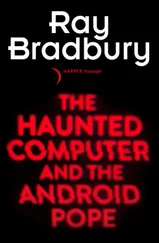The birth of Electronic Arts did represent the advent of a more advanced approach pioneered by Activision and others— a new kind of software publishing business that was rooted not in the early days of technically oriented enthusiasts but in the personal computer industry that had grown up around homebrew-spawned enterprises like Apple. EA’s management group shared a vision of the changes computers were going to bring to the world, but EA’s heavily marketing-oriented Silicon Valley vets weren’t exactly a bunch of dewy-eyed hobbyists. Trip Hawkins had been with Apple since 1978, where he had most recently been in charge of marketing for Apple’s Lisa computer. Although the machine flopped in the market, the job brought him into contact with a lot of talented programmers, and his relationship with them became a bankable asset when he left Apple in April 1982 to hang out his own shingle.
The spring of 1982 was a golden time for somebody like Trip Hawkins to look for venture backing. Atari was still raking it in. Activision was performing phenomenally well. The shakeout wasn’t even a cloud on the horizon, and venture capitalists were salivating over the phenomenal profits that people like Arthur Rock had made by backing start-ups like Apple. Obviously, software was the next gold mine for these investors. Hawkins drew up a business plan around the idea of a company that would publish innovative high-quality software slated for the home market and created not by anonymous employees but by contract artists who would be as potentially promotable as rock stars.
The start-up money became even easier to find when Hawkins signed up Richard Melman, then director of marketing for VisiCorp, as Electronic Arts’ marketing director. (Venture capitalists like track records and pedigrees.) To ice the cake, EA moved its start-up operation into the office of its backer Don Valentine, one of the most successful of the software venture capitalists. And the cherry on top of the icing was put into place when Steve Wozniak, co-founder of Apple, joined EA’s board of directors.
With Wozniak, Melman, and Valentine in place, Hawkins sold his vision to the people who could put some product out there to fulfill the image—top-notch programmers. He had at least one great programmer from the beginning—Bill Budge. Woz was one of Budge’s heroes, and EA gave Bill the full treatment, showing him mock-ups of the product packaging and media ads that would turn him into a star, and it convinced Bill that his participation was essential to the success of the enterprise. Electronic Arts obtained the original rights to the Atari version of Pinball Construction Set and then later picked up the Apple version, originally published by Budgeco.
The metaphor of the software publishing house as a kind of record company wasn’t invented by Electronic Arts. The original “software artist” house, Activision, was started by Jim Levy, a marketing whiz from the record industry, and a group of programmers from Atari who felt that Ray Kassar’s approach to software marketing didn’t give programmers the recognition they deserved. The essence of Activision, since its inception, was therefore its programmer orientation; and before long its central group of programmers succeeded in living their dream of being part of a company that was run by and for programmers. They achieved the recognition they wanted and did very well for a number of years.
The Activision magic was unbeatable for a time. Everything the programmers touched turned to gold. Then the video game fad began to diminish, and with it, Activision’s chief market. Because Activision had so emphasized its programmer orientation, and had intentionally isolated the people who created its products from the people who sold those products, it failed to respond quickly enough to the change in market conditions. The programmers’ distrust of marketers had simply led them to lose touch with their market. Activision’s director of product development once told me proudly that its marketing people were not permitted to have any input into product development. Marketing wasn’t allowed to get involved until the product was finished.
Activision had sales of more than $150 million in its biggest year, but things started going downhill with the demise of the Atari cartridge market. The company went public in June 1983. The stock quickly fell from its opening price, and as I write is priced at less than one-twelfth of its initial value. The company has lost virtually all of its top management.
Electronic Arts, on the other hand, was as firmly committed to the importance of marketing as it was to the importance of programmers. It started out much smaller than Activision, and it aimed itself at the growing home computer market rather than the diminishing video game market. It was one of the companies that survived the software shakeout of 1984.
Sympathetic as I am to the programmer’s need for creative freedom, I know that if a company is so fanatical in its perception of programming as a kind of sacred art, it can, like Activision, cut itself off from changes in market conditions. Like the book and record businesses, software publishing must, in order to work well, achieve the proper balance of art and business interests. Many game programmers would still be writing shoot-’em-up games, and far too many business-productivity programmers would still be turning out spreadsheets, if it weren’t for the marketing people who told them that people just weren't buying the old stuff anymore.
Indeed, the metaphor of a software publisher as a kind of relative of a record company goes beyond the idea of the programmer as star. It involves as well a number of simple rules on how to run a record company properly—rules that do seem to translate well to the software business. Hits are identified in advance and promoted heavily. Classics are identified that are going to give a company a catalogue that can run year after year, but that are not expected to be hits right away. And a company develops an ability to respond very quickly to the sleepers that it didn’t spot in advance but that just seem to blossom; a company picks the sleepers as early as possible and promotes them into hits.
The software publishing industry is still so new that no single model or metaphor has proved so successful that it has dominated all segments of the market. The record-company metaphor has not proven to be the only model for the way a software publishing business ought to be run, nor has it been the most successful one.
In the early days, there was no such thing as a metaphor or model for running a software company. Packaging and promotion were foreign words in the era of the homebrew enthusiasts. A booth at a trade show consisted of a card table or two. The first instance of an image or model that shaped company styles seemed to be the rise of VisiCorp, the business-oriented marketing company. VisiCorp software was the first microcomputer software to be taken seriously by the business community, and VisiCorp people dressed themselves like the customers they wanted to sell their product to—dark three-piece suits, white shirts, and dark ties. By contrast, home computer software companies seem to have maintained a less formal style than that of the business-oriented companies.
When Atari came along and turned an electronics and software start-up company into a billion-dollar profit center, the metaphor for a software publisher became one of a producer of consumer goods; Kassar preferred people from Procter & Gamble and Clorox over people from Apple. Atari’s fatally flawed vision of software publishing concentrated on software as a mass-market commodity that can be packaged and sold like towels or detergents. It neglected to notice that software is a kind of intellectual property as well as a marketable commodity, and care must be taken to hire and nurture the very best programmers.
Читать дальше










